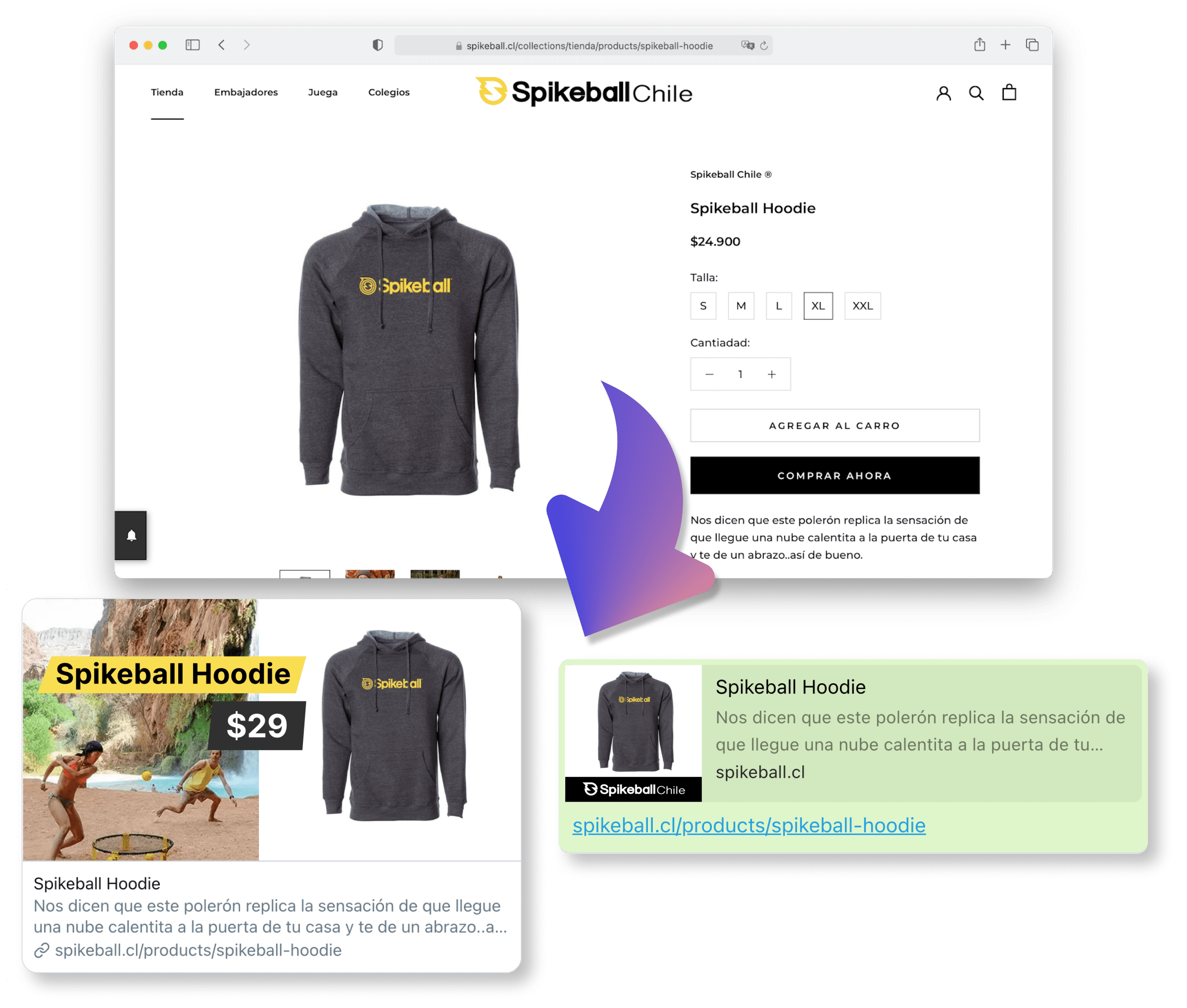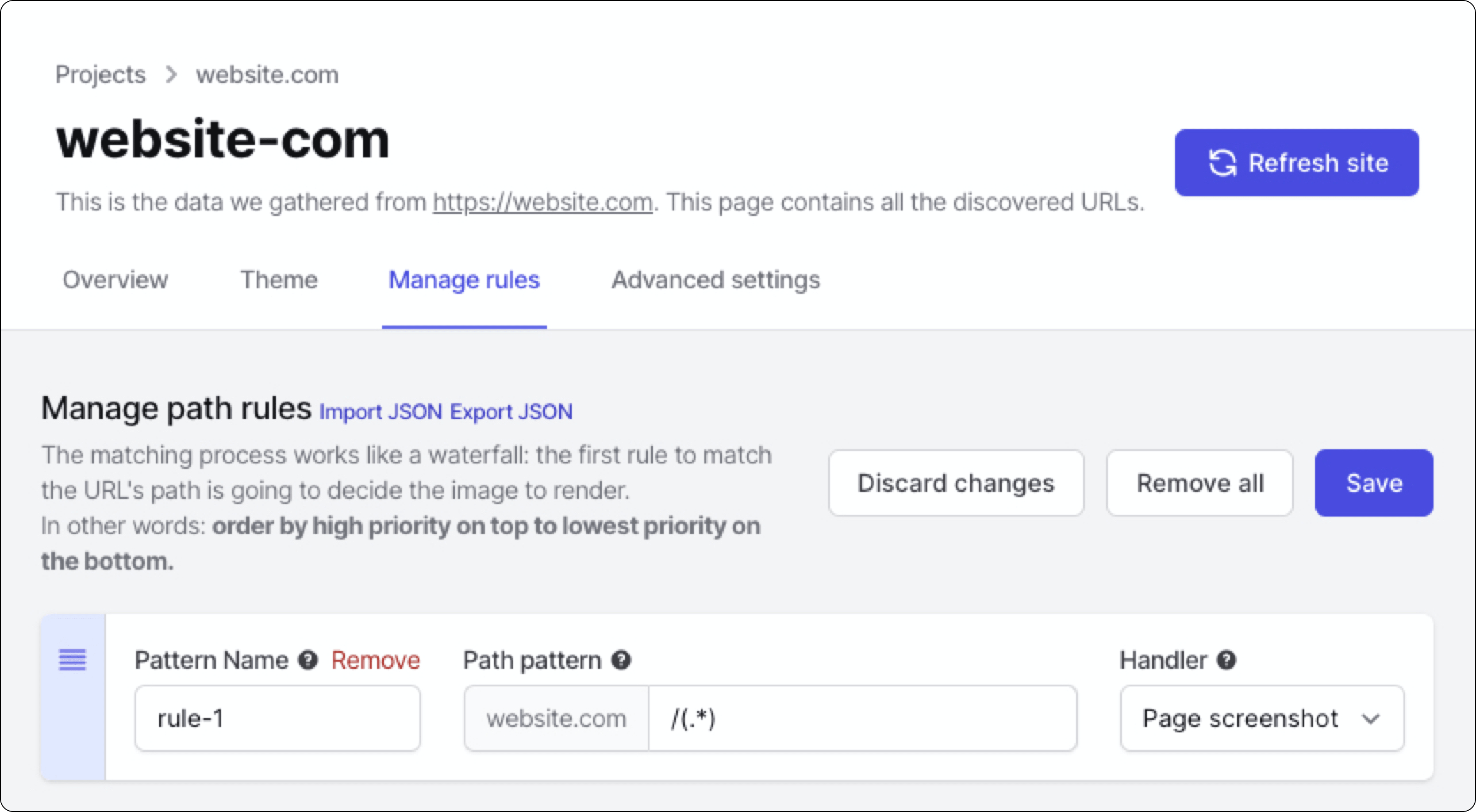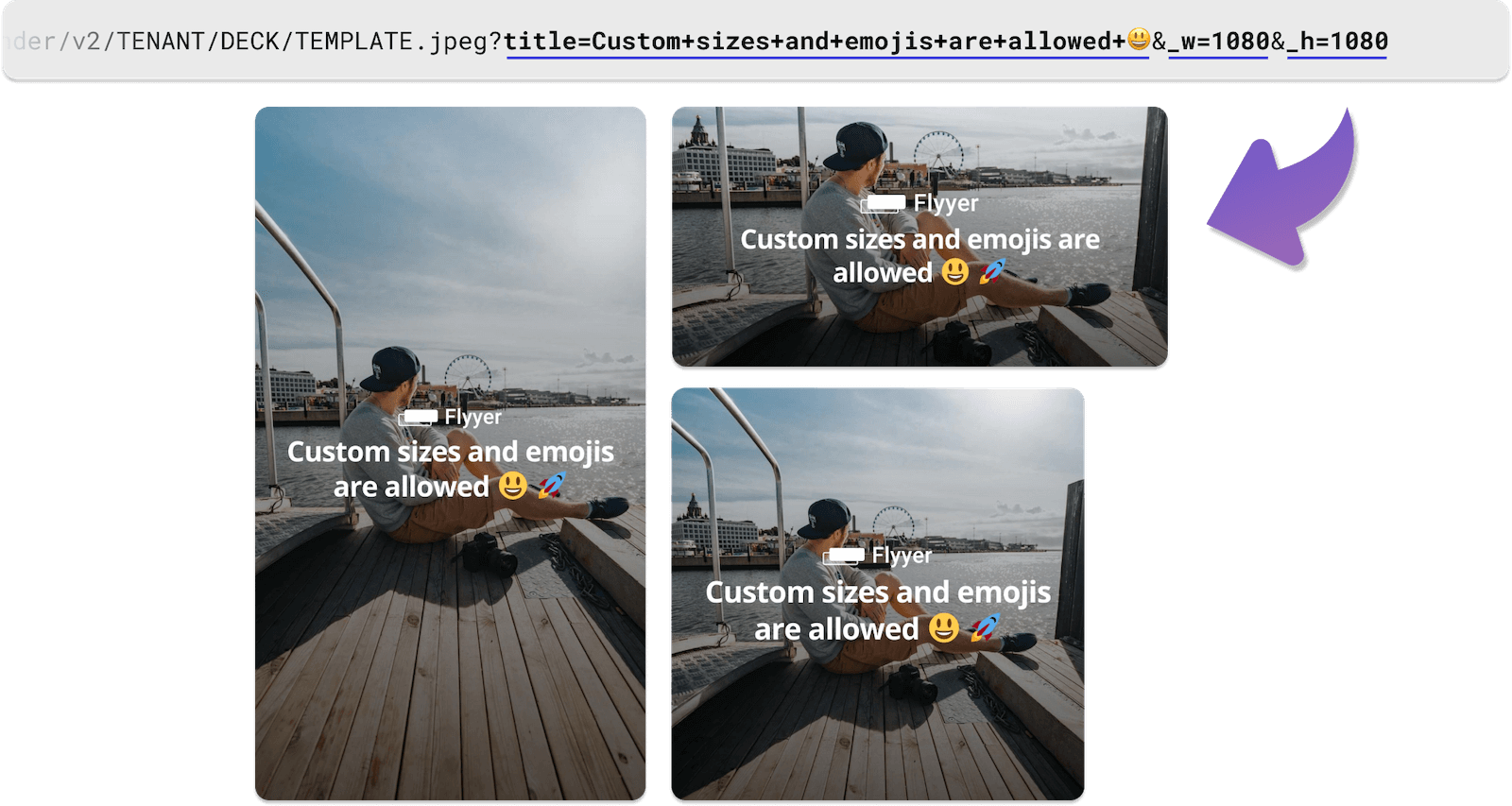README
flayyer-js
Format URLs to generate social media images using Flayyer.com.
To create templates with React.js or Vue.js use create-flayyer-app 👈

This module is agnostic to any JS framework and has only one dependency: qs.
Index
Get started (5 minutes)
1. Install module
This module supports Node.js, Browser and can be bundled with any tool such as Rollup, Webpack, etc and includes Typescript definitions.
yarn add @flayyer/flayyer
# or with npm:
npm install --save @flayyer/flayyer
2. Flayyer.ai smart image link
Haven't registered your website yet? Go to Flayyer.com and import your website to create a project (e.g.
website-com).
For each of your routes, create an instance.
import { FlayyerAI } from "@flayyer/flayyer";
const flayyer = new FlayyerAI({
// Your project slug
project: "website-com",
// Relative path
path: `/path/to/product`,
});
console.log(flayyer.href());
// > https://flayyer.ai/v2/website-com/_/__v=1618281823/path/to/product
2.1 Next.js
Remember to dynamically get the current path for each page. If you are using Next.js you should probably do this:
import { useRouter } from 'next/router'
function SEO() {
const router = useRouter();
const flayyer = new FlayyerAI({
project: "my-project",
path: router.asPath,
});
// ...
}
3. Setup <head> meta tags
You'll get the best results doing this:
<meta property="og:image" content={flayyer.href()} />
<meta name="twitter:image" content={flayyer.href()} />
<meta name="twitter:card" content="summary_large_image" />
4. Manage rules
Login at Flayyer.com > Go to your Dashboard > Manage rules and create a rule like the following:
Voilà! To create templates with React.js or Vue.js use create-flayyer-app 👈
Advanced usage
Advanced features include:
- Custom variables: additional information for your preview that is not present in your website. [Note: if you need customization you should take a look at Flayyer.io]
- Custom metadata: set custom width, height, resolution, and more (see example).
- Signed URLs.
Here you have a detailed full example for project website-com and path /path/to/product.
import { FlayyerAI } from "@flayyer/flayyer";
const flayyer = new FlayyerAI({
// Project slug, find it in your dashboard https://flayyer.com/dashboard/.
project: "website-com",
// The current path of your website (by default it's `/`).
path: "/path/to/product",
// [Optional] In case you want to provide information that is not present in your page set it here.
variables: {
title: "Product name",
img: "https://flayyer.com/img/marketplace/flayyer-banner.png",
},
// [Optional] Additional variables.
meta: {
id: "jeans-123", // stats identifier (e.g. product SKU), defaults to `path`.
width: 1080, // force width (pixels).
height: 1080, // force height (pixels).
v: null, // cache-burst, to circumvent platforms' cache, default to a timestamp, null to disable.
},
});
Read more about integration guides here: https://docs.flayyer.com/guides
Flayyer.io
Flayyer.ai uses the rules defined on your dashboard to decide how to handle every image based on path patterns. It fetches and analyse your website to obtain information and render a content-rich image. Let's say "FlayyerAI renders images based on the content of this route".
Flayyer.io instead requires you to explicitly declare template and variables for the images to render, giving you more control for customization. Let's say "FlayyerIO renders an image using this template and these explicit variables".
import { FlayyerIO } from "@flayyer/flayyer";
const flayyer = new FlayyerIO({
tenant: "flayyer",
deck: "default",
template: "main",
variables: { title: "try changing this" },
});
const url = flayyer.href()
// https://flayyer.io/v2/flayyer/default/main.jpeg?title=try+changing+this
After installing this module you can format URLs. Here is an example with React.js, but note this can be used with any framework:
import React from "react";
import { FlayyerIO } from "@flayyer/flayyer";
function Head() {
const flayyer = new FlayyerIO({
tenant: "tenant",
deck: "deck",
template: "template",
variables: {
title: "Hello world!",
image: "https://yoursite.com/image/products/1.png",
},
});
const url = flayyer.href();
return (
<head>
<meta property="og:image" content={url} />
<meta name="twitter:image" content={url} />
<meta name="twitter:card" content="summary_large_image" />
</head>
);
}
Variables can be complex arrays and objects.
const flayyer = new FlayyerIO({
// ...
variables: {
items: [
{ text: "Oranges", count: 12 },
{ text: "Apples", count: 14 },
],
},
meta {
id: "slug-or-id", // To identify the resource in our analytics report
}
});
IMPORTANT: variables must be serializable.
You can set image dimensions, note if your are planing to use this as <img src={flayyer.href()} /> you should disable cache-bursting.
const flayyer = new FlayyerIO({
tenant: "tenant",
deck: "default",
template: "main",
variables: {
title: "Awesome 😃",
description: "Optional description",
},
meta: {
v: null, // prevent cache-bursting in browsers
width: 1080, // in pixels
height: 1920, // in pixels
}
});
<img src={flayyer.href()}>
To create templates with React.js or Vue.js use create-flayyer-app 👈
Development
Prepare the local environment:
yarn install
To decode an URL for debugging purposes:
console.log(decodeURI(url));
// > https://flayyer.io/v2/tenant/deck/template.jpeg?title=Hello+world!&__v=123
Helpers to compare instances (ignores __v param and performs a shallow compare of variables).
import {
isEqualFlayyerIO,
isEqualFlayyerAI,
isEqualFlayyerMeta,
} from "@flayyer/flayyer";
const boolean = isEqualFlayyerIO(fio1, fio2);
Test
To run tests:
yarn test
FAQ
What is the difference between Flayyer.ai and Flayyer.io?
Flayyer.ai uses the rules defined on your dashboard to decide how to handle every image based on path patterns. It fetches and analyse your website for obtaining information and then rendering a content-rich image increasing click-through-rate with no effort. Let's say "FlayyerAI renders images based on the content of this route".
Flayyer.io requires you to explicitly declare template and variables for the images to render, giving you more control for customization. Let's say "FlayyerIO renders an image using this template and these explicit variables".
Is it compatible with Nextjs, React, Vue, Express and other frameworks?
This is framework-agnostic, you can use this library on any framework on any platform.
How to configure Flayyer.ai?
Visit your project rules and settings on the Flayyer Dashboard.
What is the __v= thing?
Most social networks caches images, we use this variable to invalidate their caches but we ignore it on our system to prevent unnecessary renders. We strongly recommend it and its generated by default.
Pass meta: { v: null } to disabled it (not recommended).


